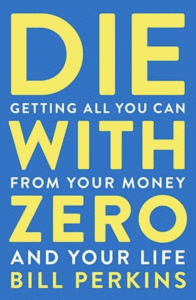ESPP is a benefit many employees at publicly traded companies benefit from. In many cases, the benefit is seen almost like a retirement plan and many employees keep their ESPP for a long time. The challenge with holding all of the ESPP for many years is that it probably becomes overweight for your portfolio and not only that, you have both your job and a large portion of your portfolio tied to your employer. That can be dangerous if something were to happen.
What is ESPP?
ESPP stands for Employee Stock Purchase Plan. As mentioned, many large publicly traded companies have them. To name a handful; the Canadian banks, Saputo, Microsoft, Home Depot and many others offer a company stock purchase plan. The plan usually provides a discount on the price of the shares for the employees to benefit from. That benefit is also taxable and that’s taxed as income at your marginal tax rate.
ESPP Example
Assuming your company allows for 10% contribution, your pay would be deducted by 10% every pay day and kept aside for the contribution period. For simple math, assume a salary of 50K$ and a semi-annual purchase period with a 10% contribution. That would leave you with 2500$ per period to purchase company stock at a discount. If we assume company ABC’s stock price is at 20$ and provides a discount of 15%, you would purchase the stock at 17$ and pay tax on the 3$ benefit taxed at your marginal tax rate. The tax you pay happens on purchase whether or not you sell. With a 50K$ salary, I’ll approximate the tax at 1$ effectively leaving you with an automatic 2$ gain.
The rules are different for many companies but some keep the lowest price for 2 periods which means that if your purchase at 15$ for the previous period, then your purchase price for the current period would be the lowest of 15$ (previous purchase price) or the new price defined by your stock price with a 15% discount. In our example above, the purchase price was 17$. If we include the previous purchase price example then your purchase price would remain at 15$ providing you with a 5$ benefits.
Note that future capital gains (or losses) are calculated on the 20$ purchase price and not the discounted price as you already paid taxes on that benefit. The next step is when to sell … At this point, you are effectively an investor in your ABC employer. Not just an employee anymore.
Here is how an employee earning 50K$ would have done with a 10% contribution for semi-annual contributions.
- With a 2500$ contribution and a 17$ price, an employee would have 147 shares.
- With a 2500$ contribution and a 15$ price, an employee would have 166 shares.
ESPP Sell Strategies
There are some situations where it’s obvious like when you pay 20$ for your stock and it’s worth 30$ on the purchase day. That’s a 50% return up front but let’s look at what employees may have done in other situations.
Use ESPP as a retirement plan
This should really be looked at as part of an overall portfolio strategy otherwise your retirement plan may soon be heavy in your company and one day you may be in a dangerous situation. If you are not familiar with owning individual stocks, you may feel stressed when there are market swings and your portfolio fluctuates.
Remember that owning stocks in your employer’s company is not a retirement plan, it makes you an investor in the company. Your retirement plan needs to consider all the income and benefits you can receive such as CPP, OAS, or your investment portfolio.
Sell all shares on the purchase date
This is where you use the ESPP as a saving plan and leverage it for a quick profit (the ESPP discount which is easy money). In some cases, you may forfeit growth and profits by selling too early. This is usually the safest play when it comes to diversifying from your main income.
Sell some and keep some for potential profits
This is where you start thinking about your company as an investment. The shares are usually deposited at the close of the previous day’s market and ready for you to trade the next day. There is always a chance that the markets are down and your shares are in the red (from a capital gains/losses perspective).

